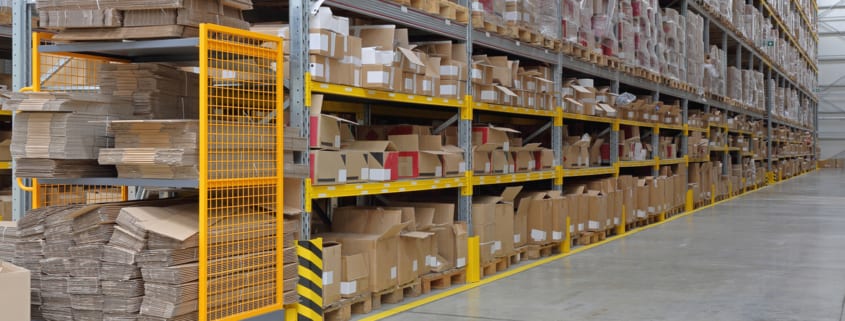3 Factors Impacting the Supply and Demand of Fulfillment Centers
The industrial real estate sector has experienced a significant amount of growth within the past 5 years, with no signs of slowing down. In fact, to accommodate this growth, an additional 510 million square feet of new industrial real estate space is expected to be developed between 2019-2020 alone.
Fulfillment centers are one specific type of industrial real estate that is experiencing an excessive amount of growth. This growth is heavily influenced by the rise of e-commerce, the desirability of urbanization, and fluctuations in sales and distribution patterns.
Read ahead to learn about these three factors that significantly impact the supply and demand of warehouses and how these trends are shaping the future of industrial real estate.
The growth of e-commerce has led to massive changes in traditional technological and operational processes. While goods were once available only by physically visiting a brick-and-mortar store location, consumers now have the luxury of simply pressing a button and having items show up at their doorstep. And as consumer expectations for fast, easy service rise, the demand for warehouse space and the need for suitable industrial land for this space is steadily increasing.
Because of e-commerce’s success, traditional brick-and-mortar stores have seen a major decline, resulting in the closure of hundreds of malls throughout the nation. According to CBRE, at least 24 vacant retailer locations across the country are now home to industrial centers, a trend that is expected to gain in popularity as more stores and shopping malls close their doors. In fact, since 2016, 7.9 million square feet of retail space has been converted into 10.9 million square feet of industrial space. The additional 3 million square feet is created as developers opt to demolish existing structures so that they can build larger facilities.
Amazon’s fulfillment center in Euclid, Ohio is one of the many examples of how e-commerce has impacted the supply and demand of fulfillment facilities. This particular fulfillment center, which was once home to the Euclid Square Mall, now utilizes the 650,000 square feet building to process and manage online orders.
The Popularity of Urbanization
The supply and demand of fulfillment centers is directly correlated to the popularity and growth of urbanization. Facilities in dense, urban areas, such as Los Angeles, San Francisco, or New Jersey, are closer to population hubs, and help tenants to better fulfill their one-day and same-day delivery guarantees. Additionally, building warehouses in locations like these can significantly reduce delivery costs and times because they usually provide convenient access to highways, zoning for commercial use, and proximity to larger groups of a company’s target markets. And although rents are typically higher in urban areas, the savings from being closer to bridges, tunnels, and thruways help to offset these costs.
As the popularity of urbanization and the demand for fulfillment centers increases, so will the need for skilled talent. In March 2019, a total of 345,000 job openings in transportation, warehousing, and utilities was reported. And projections from CBRE reported that, in 2018 and 2019, an additional 226,000 warehouse workers needed to be hired just to keep pace with demand. Fulfillment centers that are located in urban areas create shorter commutes and easier access for workers, both of which are important when attempting to bridge the gap between supply and demand.
A Fluctuation in Sales and Distribution Patterns
In the past, sales patterns were much more predictable than they are today. Because of this predictability, accurately prepping for inventory and adequate space for those products was a much simpler process. Today, however, buying patterns are more difficult to predict because of consumers’ ability to have items directly shipped to their homes. This fluctuation has created a need for more fulfillment centers that can accommodate any potential overflow of inventory.
The rapid growth and fluctuating shipment patterns associated with e-commerce have created a need for newer, more updated facilities that can handle the ebb and flow of inventory. Today, the average order fulfillment warehouse is about 34-years-old. According to data from 56 major U.S. markets, older warehouses built before the mid-2000s have limitations, such as low ceilings, small footprints, uneven floors, and inadequate docking, making it nearly impossible for them to properly support ongoing e-commerce distributions.
As these fluctuations continue, the demand for warehouses will only continue to grow. And the combination of a low availability of modern warehouse facilities and wavering online sales patterns create ample opportunity for developing new warehouses and updating older, poorly structured ones.
Read E-Commerce Returns and CRE Warehouse Demand: Dilemma or Opportunity? for more information on warehouse solutions and logistics.











